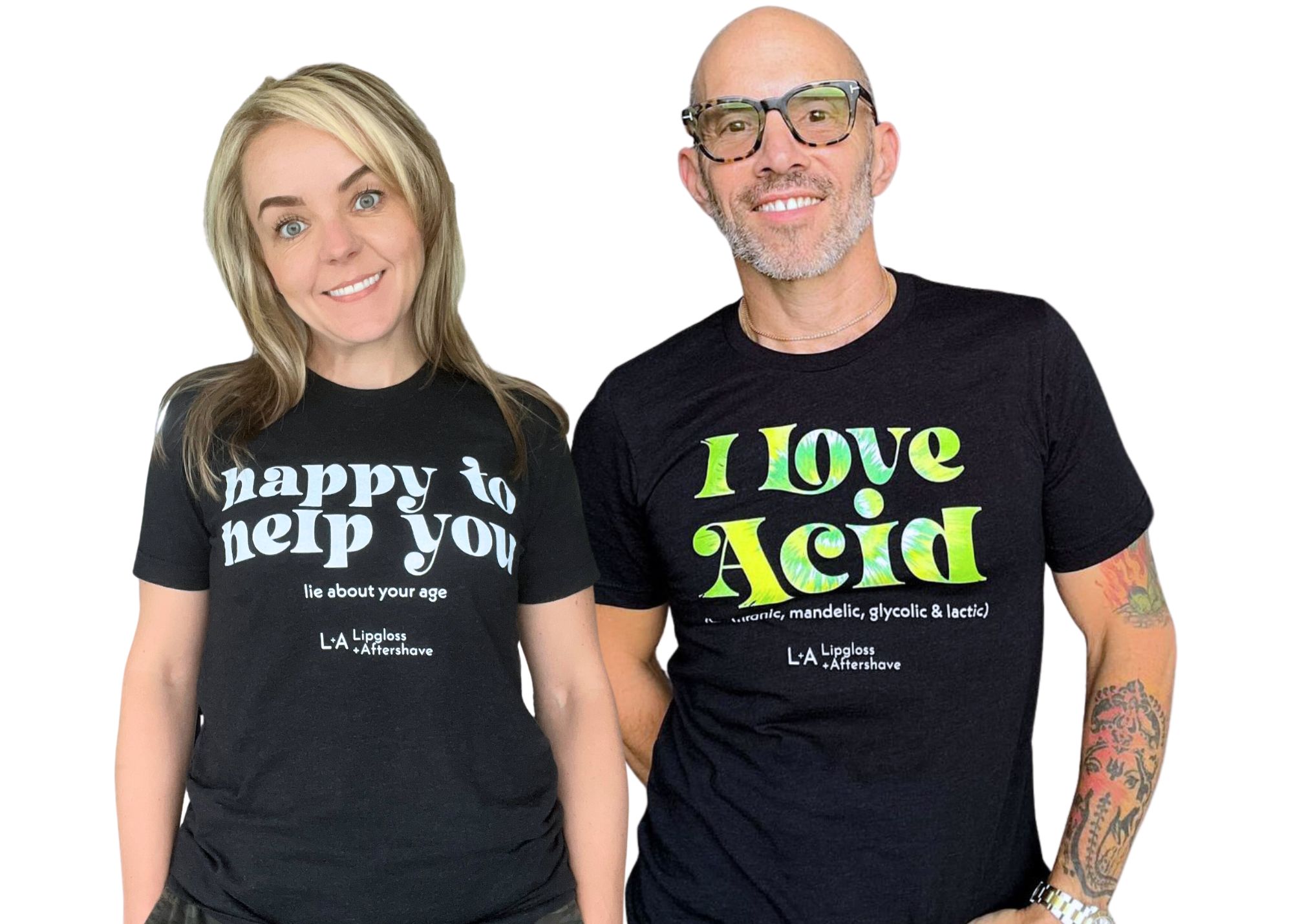Transexamic Acid – What is it?
Transexamic Acid is hot – If you’re following skincare, then tranexamic acid is no stranger to your ears. From a broad view, tranexamic acid can help to improve the appearance of hyperpigmentation by reducing the production of melanin in the affected areas and also carries antioxidant properties that can help to protect the skin from damage caused by free radicals. Tranexamic acid works on the skin by reducing hyperpigmentation, inflammation, and oxidative stress, and by promoting a more even, radiant complexion.
Why is Transexamic Acid Trending?
Like many ingredients, tranexamic acid has primarily been used in medical and pharmaceutical applications as an antifibrinolytic agent to reduce bleeding and promote blood clotting; and by utilizing these features to skincare, tranexamic acid has claims to its ability to address hyperpigmentation or the darkening of the skin caused by excess melanin production by inhibiting the activity of plasmin. Plasmin is an enzyme that breaks down blood clots and therein blocking the transfer of pigment from melanocytes to surrounding skin cells. By reducing the transfer of pigment, the epidermal layer is less prone to inflame and activate its melanogenesis process. Tranexamic Acid has also been shown to reduce the activity of certain enzymes that contribute to skin inflammation and to decrease the production of pro-inflammatory cytokines. In addition to its benefits for hyperpigmentation, tranexamic acid is also believed to have anti-inflammatory and antioxidant properties which can help to protect and repair the skin and in doing so help to improve skin texture, reduce the appearance of fine lines and wrinkles, and promote an overall more youthful and radiant complexion.

Introducing Witty Panda
Skin Care Inspired T-Shirts
The Witty Panda collection of skincare, beauty + wellness apparel, and gifts. Show off your pride and love of the skincare, beauty, and wellness industry. The collection combines the L+A wit with the playfulness of an adorable Panda!
However, as with any skincare ingredient, it is important to use products containing tranexamic acid as directed and to be aware of any potential side effects or interactions with other ingredients. Here’s why.
As mentioned above, Tranexamic Acid inhibits plasmin formation. Plasmin plays a crucial role in the breakdown of blood clots and degrades other proteins in the extracellular matrix, leading to tissue remodeling and cell migration. Additionally, plasmin has been implicated in processes such as wound healing, tissue repair, and the regulation of inflammatory responses. By completely inhibiting this process, our body may not recover as well or cause or other internal issues that are yet to be identified. Like anything, too much of a “good” thing, can be a bad thing. So…
What is an Effective % of Transexamic Acid in a product?
The ideal percentage of tranexamic acid to use on the skin will depend on the specific product and formulation being used, as well as individual factors such as skin type and sensitivity.
In general, tranexamic acid products used for skin lightening and brightening typically contain concentrations ranging from 2% to 5%. However, some products may contain higher concentrations, up to 10%. It’s important to note that higher concentrations of tranexamic acid may not necessarily provide better results, and may actually increase the risk of skin irritation or other adverse effects. It is important to understand the use and frequency of use in order to determine if the correct percentage is appropriate. Equally important, what you should also consider is the quality and source of tranexamic acid. As with any skincare ingredient and worth mentioning again, it’s important to be aware of any potential interactions with other products and ingredients, and to use tranexamic acid products as directed and in moderation. Some types of reasons or ingredients you should avoid with the use of tranexamic acid are, blood clotting issues, blood disorders, prolonged use of hydroquinone or retinols, use of aspirin. If you have any concerns about using tranexamic acid on your skin, it’s a good idea to consult with a dermatologist or skincare professional for personalized advice and guidance.

Contribution by Lincoln Lee
Lincoln Lee serves as a Director of Global Operations at Dermaesthetics Beverly Hills, Inc. covering 20+ countries and education. He began his career in finance and law, leading him to Asia where he worked internationally as a Director of Operations negotiating contracts and marketing ventures in China, Korea, Vietnam, and Japan. Prior to joining Dermaesthetics, Lincoln worked for various legal and financial institutions in private equity and investment banking, Ministry of Legislation, Republic of Korea, CGV Entertainment, US film industry, and was previously the director of the Beauty MBA Program at Pacific States University, Los Angeles. He also works with MUD, Cinema MakeUp School, Riverside Community College, Santa Barbara City College, Loyola Marymount University, University of San Diego, UCI Medical Center, and various Esthetic and Advanced Esthetic institutions across the world, engaging in skin care topics and legal compliances. He currently sits on various advisory boards for mobile start up technologies, emerging skincare and device companies, and consults for privately held beauty brands. Lincoln currently holds an Executive MBA, JD, LLM and various certificates from Stanford, Thunderbird, and Harvard Business School.
6 Tips To Using Transexamic Acid In Your Skincare Routine
Tranexamic acid can be used in a variety of skincare products, including serums, toners, creams, and masks.
Here are some tips for how to use tranexamic acid in your skincare routine.
1 Start with a patch test: Before using any new skincare product, it’s a good idea to do a patch test first to make sure that you don’t have an allergic reaction or other adverse reaction to the ingredient. Apply a small amount of the product with tranexamic acid to a small area of skin (such as the inside of your wrist or back of your ear) and wait 24 hours to see if any redness, itching, or other irritation occurs.
2 Use as directed: Follow the instructions on the product label or as advised by your skincare professional. Tranexamic acid products typically come in the form of a serum or cream and should be applied to clean, dry skin. You may need to use the product once or twice a day, depending on the formulation.
3 Be patient: It can take several weeks or even months to see the full benefits of tranexamic acid on the skin, especially for hyperpigmentation. Consistent use over time is important for best results.
4 Use sun protection: Tranexamic acid can make the skin more sensitive to sunlight, so it’s important to use a broad-spectrum sunscreen with at least SPF 30 every day, even if you don’t plan on spending much time outdoors.
5 Be cautious with other active ingredients: Tranexamic acid can be used in combination with other active ingredients, but it’s important to be cautious and avoid over-exfoliating or using too many potent ingredients at once, as this can lead to irritation and other skin problems.
6 Consult with a dermatologist: If you have any concerns about using tranexamic acid on your skin, or if you have a history of skin sensitivity or allergies, it’s a good idea to consult with a dermatologist or skincare professional for personalized advice and guidance.

